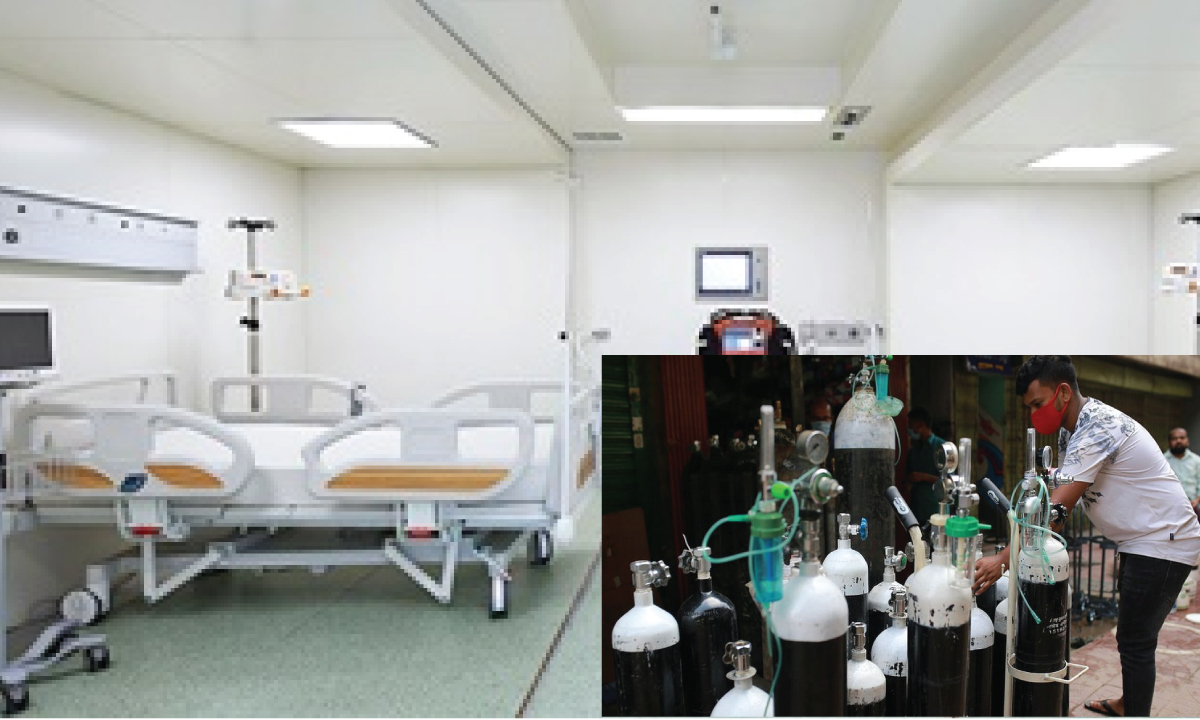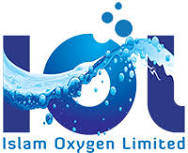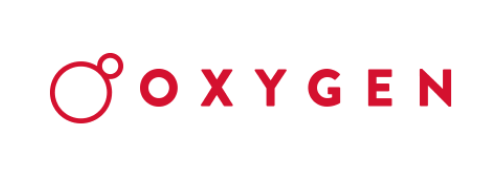Emergency Oxygen Support Dhaka provides intensive care oxygen supply services in Bangladesh, delivering essential oxygen therapy to patients in need. With a focus on providing immediate support and ensuring the well-being of individuals, Oxygen Therapy Services in Dhaka are readily available to offer efficient and reliable oxygen support.
Offering a range of solutions and equipment, they aim to meet the diverse needs of patients requiring oxygen therapy. This comprehensive service is essential in critical medical situations, allowing individuals to receive the necessary oxygen support for their recovery.
Critical Importance Of Oxygen Support In Emergency Situations
In emergency situations, the availability of oxygen support is crucial for saving lives. Dhaka Intensive Care provides oxygen therapy services and supplies in Bangladesh, ensuring critical oxygen support is readily available for those in need.
In critical emergency situations, the availability of oxygen support is of utmost importance as it can mean the difference between life and death. Emergency oxygen therapy plays a vital role in stabilizing patients and providing the necessary support for their survival.
Here is a detailed look at the life-saving abilities of oxygen therapy during emergencies:
The Life-Saving Abilities Of Oxygen Therapy During Emergencies:
- Efficient oxygen therapy can significantly enhance the patient’s oxygen saturation levels, ensuring an adequate oxygen supply to vital organs.
- Oxygen support helps in relieving respiratory distress, improving breathing patterns, and increasing overall oxygenation.
- It aids in maintaining stable oxygen levels, preventing hypoxemia, which can lead to organ failure and irreversible damage.
- Oxygen therapy is crucial in treating respiratory conditions, such as pneumonia, asthma, chronic obstructive pulmonary disease (COPD), and acute respiratory distress syndrome (ARDS).
- It plays a critical role in emergency situations such as heart attacks, cardiac arrests, and trauma cases, where oxygen demand is heightened.
Real-time need for oxygen support in intensive care units (ICUs):
- In ICUs, emergency oxygen therapy is indispensable for patients in critical condition.
- It assists in stabilizing patients until the underlying issues can be addressed, reducing the risk of complications.
- Oxygen support is essential for post-operative care and management of patients with severe illnesses, providing the necessary oxygen levels for healing and recovery.
- It aids in preventing respiratory failure, reducing the need for invasive procedures, and allowing patients to regain their normal breathing patterns.
Challenges faced by Dhaka in providing essential oxygen therapy services:
- Dhaka, being a densely populated city, faces challenges in meeting the increasing demand for emergency oxygen therapy services.
- Limited availability of centralized oxygen supply systems in hospitals and healthcare centers poses a challenge in ensuring timely access to oxygen support.
- Shortages of oxygen cylinders and concentrators, especially during emergencies, can hinder the provision of critical care.
- Transportation issues and traffic congestion delay the delivery of oxygen cylinders, further exacerbating the situation.
- The lack of awareness and understanding regarding the importance of oxygen therapy in emergency situations often leads to delayed interventions and compromised patient outcomes.
The critical importance of oxygen support in emergency situations cannot be overstated. It has the power to save lives by providing the necessary oxygen levels required for resuscitation, stabilizing vital signs, and preventing organ failure. Dhaka, like many other cities, faces challenges in ensuring the availability and accessibility of essential oxygen therapy services.
Addressing these challenges is crucial to provide the life-saving support that every patient in need deserves.
Understanding The Oxygen Supply Chain In Dhaka
Discover the intricate oxygen supply chain in Dhaka, offering emergency oxygen support and intensive care oxygen supply services. Experience reliable and efficient oxygen therapy services in Bangladesh’s bustling capital.
Dhaka, the capital city of Bangladesh, is facing an urgent need for emergency oxygen support in intensive care units (ICUs) due to the rapidly increasing number of COVID-19 cases. To address this critical situation, it is imperative to analyze the existing oxygen supply infrastructure in Dhaka and identify any limitations and bottlenecks in the distribution network.
Additionally, understanding the role of the government and healthcare organizations in addressing supply gaps is crucial for ensuring timely and efficient oxygen therapy services in the city.
Analysis Of The Existing Oxygen Supply Infrastructure In Dhaka:
- Availability of Oxygen Manufacturing Facilities: Dhaka currently depends on a limited number of oxygen manufacturing facilities to meet the increasing demand. Analyzing the capacity of these facilities and their ability to scale up production is essential in understanding the capacity of the oxygen supply chain.
- Storage and Transportation: Assessing the adequacy of oxygen storage facilities and the efficiency of transportation networks is critical. Proper storage and transportation infrastructure ensures that oxygen reaches the ICUs in a timely manner, preventing delays and interruptions in oxygen therapy services.
- Monitoring and Quality Control: Regular monitoring and quality control measures are essential to ensure the supply of medical-grade oxygen. Effective protocols should be in place to evaluate the purity and safety of oxygen provided to ICUs, reducing the risk of contamination and adverse health effects.
Identification Of Limitations And Bottlenecks In The Distribution Network:
- Demand-Supply Gap: The increasing demand for oxygen support in Dhaka has created a significant gap between supply and demand. Identifying the factors contributing to this gap, such as inadequate manufacturing capacity or inefficient distribution processes, is crucial in addressing the issue.
- Unequal Distribution: Unequal distribution of oxygen across different parts of Dhaka can lead to regional disparities in access to emergency oxygen support. Evaluating the distribution network and ensuring equal access to oxygen therapy services should be a priority.
- Delivery Timelines: Timely delivery of oxygen cylinders to ICUs is of utmost importance. Analyzing the factors causing delays in delivery, such as transportation bottlenecks or logistical challenges, will help streamline the supply chain and ensure that emergency support reaches those in need without any delays.
Role Of Government And Healthcare Organizations In Addressing Supply Gaps:
- Government Intervention: The government plays a crucial role in addressing oxygen supply gaps by providing necessary funding, enacting policies to support oxygen manufacturing facilities, and coordinating with healthcare organizations to streamline the distribution network. Collaboration with other stakeholders is essential for effective implementation.
- Healthcare Organizations’ Efforts: Healthcare organizations, including hospitals and NGOs, can contribute to addressing supply gaps by actively participating in the oxygen supply chain. By implementing efficient inventory management systems, coordinating with manufacturers and distributors, and prioritizing the needs of critically ill patients, healthcare organizations can ensure oxygen therapy services are delivered effectively.
Understanding the oxygen supply chain in Dhaka is crucial for addressing the emergency oxygen support requirements in ICUs. Analyzing the existing infrastructure, identifying limitations in the distribution network, and involving the government and healthcare organizations in addressing supply gaps are vital steps towards ensuring timely and efficient oxygen therapy services in Dhaka.
Strategies To Enhance Oxygen Therapy Services In Dhaka
Enhancing oxygen therapy services in Dhaka is crucial for providing emergency support and intensive care to patients in need of oxygen. With an efficient supply chain and improved access to oxygen therapy, Bangladesh can better meet the oxygen needs of its population in times of medical emergencies.
Building a robust oxygen supply chain system in Dhaka:
- Establishing centralized distribution centers for oxygen supplies to ensure quick and efficient delivery to healthcare facilities.
- Collaborating with logistics partners to create a reliable transportation network for seamless distribution of oxygen cylinders and concentrators.
- Developing a real-time tracking system to monitor the availability and movement of oxygen supplies, enabling timely replenishment and minimizing shortages.
Establishing oxygen production and storage facilities near healthcare centers:
- Identifying suitable locations near hospitals and clinics to set up oxygen production units, reducing transportation time and costs.
- Building storage facilities with sufficient capacity to ensure an uninterrupted supply of oxygen to meet the needs of critical patients.
- Implementing strict safety measures and guidelines to ensure the proper handling and storage of oxygen cylinders and concentrators.
Ensuring proper maintenance and regular quality checks of oxygen equipment:
- Conducting routine inspections and maintenance of oxygen equipment to identify and address any issues promptly, minimizing downtime.
- Employing trained technicians to perform regular quality checks on oxygen cylinders and concentrators, ensuring their efficiency and safety.
- Implementing strict protocols for cleaning and sanitizing oxygen equipment to maintain hygienic conditions and prevent contamination.
By implementing these strategies, Dhaka can significantly enhance its oxygen therapy services, ensuring that critical patients receive the life-saving oxygen they need on time. This strengthened system will improve the overall healthcare infrastructure in the city and contribute to better patient outcomes.
Collaboration And Support From International Organizations
Through collaboration with international organizations, emergency oxygen support and oxygen therapy services are being provided in Dhaka, Bangladesh to ensure intensive care patients have access to vital oxygen supply. This initiative aims to address the critical need for oxygen in healthcare facilities and support patients in their recovery.
Exploration Of Partnerships With Global Aid Organizations For Oxygen Supply
- The collaboration with international aid organizations plays a crucial role in ensuring a steady supply of emergency oxygen support in Dhaka.
- These organizations bring valuable experience and expertise in managing oxygen therapy services, helping to bridge any gaps in resources and knowledge.
- By exploring partnerships with global aid organizations, Dhaka can tap into international networks and access a wider range of resources, including oxygen supplies, equipment, and technical support.
- This collaboration also opens up avenues for knowledge exchange and capacity-building, enabling healthcare professionals in Dhaka to enhance their skills in oxygen therapy management.
- International aid organizations can assist in the procurement, delivery, and distribution of oxygen supplies, ensuring an adequate and uninterrupted flow to meet the growing demand in Dhaka’s intensive care units.
Exchange Of Knowledge And Expertise In Managing Oxygen Therapy Services
- Collaborating with international organizations not only facilitates the exchange of oxygen supplies but also promotes the exchange of knowledge and expertise.
- Dhaka’s healthcare professionals can benefit from the experiences of experts associated with global aid organizations, learning about best practices for oxygen therapy services.
- This exchange allows for the sharing of innovative approaches, protocols, and techniques to optimize the delivery and management of oxygen support in intensive care settings.
- International organizations can provide training and capacity-building opportunities, further enhancing the skills and competency of Dhaka’s healthcare workforce.
- This exchange of knowledge and expertise ultimately improves the quality of emergency oxygen support provided in Dhaka, enhancing patient outcomes and saving lives.
Leveraging International Support To Strengthen Dhaka’S Emergency Response Capabilities
- International support is instrumental in strengthening Dhaka’s emergency response capabilities, especially in the context of oxygen supply.
- By leveraging international partnerships and support, Dhaka can enhance its emergency preparedness and response to meet the escalating oxygen therapy demands.
- International organizations can provide technical assistance in establishing robust systems for oxygen monitoring, distribution, and management, ensuring efficient utilization of resources.
- Collaborative efforts can lead to the development of standardized protocols and guidelines for oxygen therapy, streamlining practices across healthcare facilities in Dhaka.
- This international support not only strengthens Dhaka’s emergency response capabilities but also ensures a sustainable and resilient healthcare system in the face of future crises.
Remember that every person involved in emergency oxygen support in Dhaka must be prepared for emergencies and well trained in oxygen therapy management. With the collaboration and support from international organizations, Dhaka can enhance its emergency response capabilities and deliver optimal oxygen therapy services to save lives.
Creating Awareness And Education About Emergency Oxygen Support
Our Emergency Oxygen Support services in Dhaka are dedicated to creating awareness and education about the critical need for oxygen therapy in intensive care units. We strive to ensure oxygen supply is readily available in Bangladesh to provide lifesaving support to patients in need.
Educating Healthcare Professionals About Proper Oxygen Therapy Protocols:
- Proper education and training of healthcare professionals is essential to ensure that oxygen therapy is administered correctly and safely.
- By educating healthcare professionals about proper oxygen therapy protocols, we can improve patient outcomes and reduce the risk of complications.
- Below are key points that should be covered in the education and training programs for healthcare professionals:
- Understanding the indications and contraindications of oxygen therapy.
- Familiarization with different oxygen delivery devices and their appropriate usage.
- Knowledge of oxygen flow rates and concentration levels for different patient conditions.
- Awareness of potential risks and side effects of oxygen therapy.
- Understanding the importance of monitoring oxygen saturation levels and adjusting oxygen therapy accordingly.
- Training in infection control practices related to oxygen administration.
Raising Public Awareness About The Importance Of Early Access To Oxygen Support:
- Public awareness plays a crucial role in ensuring that individuals recognize the signs and symptoms of oxygen deficiency and seek early access to oxygen support.
- The following points highlight the key aspects that should be emphasized when raising public awareness:
- Educating the public about common symptoms of oxygen deficiency, such as shortness of breath, confusion, and rapid heartbeat.
- Encouraging individuals to seek medical attention promptly if they experience any of these symptoms.
- Highlighting the significance of early access to oxygen support in improving patient outcomes.
- Providing information about the availability and accessibility of oxygen therapy facilities in the local area.
- Disseminating information through various channels, such as social media, community outreach programs, and public service announcements.
Developing Training Programs For Medical Staff On Emergency Oxygen Administration:
- Training programs focused on emergency oxygen administration are vital for equipping medical staff with the necessary skills and knowledge to provide prompt and efficient oxygen therapy in critical situations.
- The following key areas should be covered in the training programs:
- Familiarization with emergency oxygen equipment and its proper usage.
- Understanding the principles of emergency oxygen delivery, including flow rates and concentration levels.
- Training on assessing the need for emergency oxygen support based on clinical indicators.
- Rapid response protocols for initiating oxygen therapy in emergency situations.
- Regular simulation exercises and drills to enhance proficiency in emergency oxygen administration.
- Ongoing education and updates on the latest advancements and guidelines in emergency oxygen support.
Remember, early access to oxygen support can be life-saving, and raising awareness and education efforts are essential not only for healthcare professionals but also for the general public. By implementing comprehensive training programs and increasing awareness, we can ensure that oxygen therapy is administered effectively, leading to improved patient outcomes in emergency situations.
The Role Of Technology In Oxygen Therapy Services
Technology plays a crucial role in providing oxygen therapy services, especially in emergency situations. In Dhaka, Bangladesh, the availability of intensive care oxygen support is made possible through advanced technological systems, ensuring timely and efficient oxygen supply to those in need.
Innovative technologies for efficient oxygen supply and monitoring systems:
- IoT-enabled oxygen concentrators and cylinders: These devices utilize sensors and connectivity to efficiently monitor oxygen levels and provide a continuous supply of oxygen to patients in need.
- Smart oxygen delivery systems: These systems use advanced algorithms and automation to regulate the flow of oxygen, ensuring accurate delivery based on individual patient requirements.
- Oxygen monitoring devices: Specialized devices measure and monitor oxygen saturation levels, respiratory rate, and other vital parameters, allowing healthcare professionals to closely monitor patients’ response to oxygen therapy.
Utilizing telemedicine and connected devices to optimize oxygen therapy:
- Remote patient monitoring: Through telemedicine, healthcare providers can remotely monitor patients’ oxygen levels and adjust therapy accordingly, reducing the need for frequent hospital visits.
- Connected wearable devices: Patients can use wearable devices like pulse oximeters to continuously track their oxygen levels and share the data with healthcare providers in real-time, facilitating timely intervention and personalized care.
Digital platforms to manage and track oxygen demand, supply, and distribution:
- Cloud-based platforms: These platforms enable central management of oxygen demand, supply, and distribution data, ensuring efficient allocation and timely replenishment of oxygen resources.
- Real-time tracking systems: With the help of digital platforms, healthcare facilities can monitor oxygen supply levels, track delivery logistics, and anticipate potential shortages, enabling proactive measures to avoid disruptions in oxygen therapy.
By leveraging innovative technologies, telemedicine, and digital platforms, oxygen therapy services in Dhaka can enhance resource utilization, improve patient outcomes, and ensure the availability of oxygen support to those in critical need.
Overcoming Challenges For Sustainable Emergency Oxygen Support
Discover how Dhaka Intensive Care Oxygen Supply in Bangladesh is helping to overcome challenges for sustainable emergency oxygen support. With their top-notch oxygen therapy services in Dhaka, they ensure that patients receive the critical care they need, making a difference in emergency situations.
Emergency oxygen support is a crucial aspect of intensive care and oxygen therapy services in Dhaka, as it plays a pivotal role in saving lives. However, ensuring sustainable access to emergency oxygen support is not without its challenges. Addressing these challenges is essential to guarantee a reliable supply of oxygen for those in need.
In this section, we will explore three key areas that need attention in order to overcome the obstacles faced in providing sustainable emergency oxygen support.
Addressing Infrastructure Limitations And Increasing Oxygen Production Capacity:
Expanding infrastructure and enhancing oxygen production capacity are of utmost significance to meet the rising demand for emergency oxygen. To achieve this, the following steps need to be taken:
- Upgrading existing oxygen plants and establishing new ones to increase production capacity.
- Investing in equipment and technology enhancements to improve oxygen generation and supply efficiency.
- Ensuring an uninterrupted power supply to the oxygen plants.
- Collaborating with government bodies, healthcare organizations, and international partners to secure funding for infrastructure development.
Enhancing Coordination Among Healthcare Facilities For Equitable Distribution:
Efficient coordination among healthcare facilities is critical to ensure equitable distribution of emergency oxygen supply. Here are some ways to improve coordination:
- Establishing a centralized monitoring system to track oxygen demand, distribution, and stock levels in real-time.
- Facilitating communication and information sharing among healthcare facilities to identify oxygen requirements accurately.
- Implementing a data-driven approach to forecast future oxygen needs and plan accordingly.
- Establishing collaborations and partnerships with private sector organizations and philanthropic groups to support emergency oxygen supply efforts.
Developing Contingency Plans And Emergency Response Protocols For Oxygen Crises:
In order to mitigate the impact of oxygen crises, it is crucial to have well-defined contingency plans and emergency response protocols in place. Here are key considerations when developing these plans:
- Conducting regular assessments and audits of oxygen supply chains to identify vulnerabilities and potential bottlenecks.
- Creating a robust emergency response framework that outlines roles, responsibilities, and escalation protocols for different stakeholders.
- Establishing stockpiles of oxygen cylinders and concentrators for emergency use.
- Conducting regular emergency drills and training sessions to ensure healthcare professionals are well-prepared to handle oxygen crises.
By focusing on addressing infrastructure limitations, enhancing coordination among healthcare facilities, and developing contingency plans, sustainable emergency oxygen support can be achieved. It is imperative for all stakeholders to collaborate in this endeavor to ensure that those in need receive the life-saving oxygen they require.
Ensuring A Resilient Emergency Oxygen Infrastructure In Dhaka
Ensure a robust emergency oxygen infrastructure in Dhaka for intensive care oxygen support and oxygen therapy services in Bangladesh’s capital.
In times of emergency, having a robust oxygen infrastructure is crucial for saving lives. Dhaka, the capital city of Bangladesh, recognizes the significance of a strong oxygen supply chain system to provide intensive care oxygen support to its residents. To build a resilient emergency oxygen infrastructure in Dhaka, there are two key aspects that need attention: long-term investments in oxygen infrastructure for future emergency preparedness and continuous monitoring and evaluation of the oxygen supply chain system.
Collaboration between the government, healthcare organizations, and stakeholders is also essential to ensure sustained support.
Long-Term Investments In Oxygen Infrastructure For Future Emergency Preparedness:
- Increasing oxygen production capacity: Expanding existing oxygen plants and establishing new ones can enhance the overall oxygen production capacity in Dhaka. This forward-thinking approach will ensure an ample supply of oxygen during emergencies.
- Building oxygen storage facilities: Constructing dedicated oxygen storage facilities, strategically located across the city, will help in maintaining an adequate emergency oxygen reserve. These storage facilities should adhere to proper safety standards and have the capacity to handle large volumes of oxygen.
- Upgrading distribution networks: Investing in the improvement and expansion of oxygen distribution networks is essential to ensure the seamless delivery of oxygen to healthcare facilities. This includes upgrading infrastructure such as pipelines, oxygen tankers, and transportation systems.
Continuous Monitoring And Evaluation Of The Oxygen Supply Chain System:
- Implementing real-time tracking systems: Deploying technology-driven solutions that enable real-time monitoring of oxygen supply levels, usage patterns, and distribution can help in efficiently managing oxygen resources. This proactive approach allows for timely interventions and adjustments to ensure uninterrupted supply.
- Regular maintenance and quality control: Conducting routine inspections, maintenance, and quality control checks on oxygen generation, storage, and distribution systems is crucial to prevent any bottlenecks or system failures. Adherence to strict standards for oxygen purity and safety is essential to safeguard the quality of oxygen supplies.
- Data-driven decision-making: Collecting and analyzing data related to oxygen supply, demand, and utilization can provide valuable insights for optimizing the emergency oxygen infrastructure. This data-driven approach allows for evidence-based decision-making and better resource allocation.
Collaboration between government, healthcare organizations, and stakeholders for sustained support:
- Establishing a coordination mechanism: Establishing a central agency or committee responsible for coordinating efforts between government, healthcare organizations, and stakeholders can ensure a cohesive approach towards emergency oxygen support. This mechanism will facilitate effective communication, resource sharing, and collaborative decision-making.
- Regular stakeholder consultations: Engaging with healthcare professionals, industry experts, and other relevant stakeholders on a regular basis can help identify emerging needs, address challenges, and tap into innovative solutions. These consultations should be inclusive and participatory, fostering a sense of shared responsibility.
- Public-private partnerships: Encouraging partnerships between public and private entities can provide the necessary expertise, resources, and funding to strengthen the emergency oxygen infrastructure. These collaborations can help bridge any gaps in capacity, technology, or specialized knowledge.
By implementing these measures, Dhaka can create a resilient emergency oxygen infrastructure that can effectively respond to crises and ensure the availability of oxygen therapy services when they are most needed. Together, long-term investments, continuous monitoring and evaluation, and collaboration will lay the foundation for a robust emergency oxygen support system in Dhaka.
Frequently Asked Questions On Emergency Oxygen Support Dhaka Intensive Care Oxygen Supply Bangladesh Oxygen Therapy Services In Dhaka
How Does Emergency Oxygen Support Work?
Emergency oxygen support delivers oxygen to the lungs to help patients with breathing difficulties. It is administered through a mask or nasal cannula. The oxygen therapy increases the oxygen levels in the blood, improving the patient’s breathing and overall health.
Where Can I Find Intensive Care Oxygen Supply In Dhaka?
You can find intensive care oxygen supply in Dhaka at reputable hospitals and medical centers. These facilities are equipped with advanced oxygen therapy equipment and experienced medical professionals who can provide the necessary support and care for patients in critical conditions.
What Are The Oxygen Therapy Services Available In Dhaka?
Dhaka offers various oxygen therapy services, including emergency oxygen support, home oxygen therapy, and oxygen concentrator rentals. These services aim to provide patients with the necessary oxygen supply to improve their respiratory function and enhance their overall well-being.
Conclusion
If you or your loved ones are in need of emergency oxygen support in Dhaka, look no further than the intensive care oxygen supply services offered by Bangladesh Oxygen Therapy Services in Dhaka. With their state-of-the-art facilities and dedicated team of experts, they are well-equipped to provide the highest level of care to patients requiring oxygen therapy.
Their services are not only efficient and reliable, but also available round the clock, ensuring that help is always at hand. By choosing their services, you can have peace of mind knowing that you are receiving the best possible care during critical times.
Don’t hesitate to reach out to Bangladesh Oxygen Therapy Services in Dhaka for all your emergency oxygen support needs. Your health and well-being are their top priority, and they are committed to providing exceptional care to every patient they serve.








